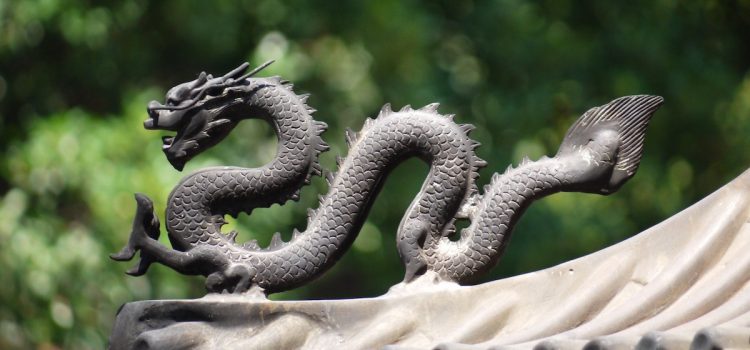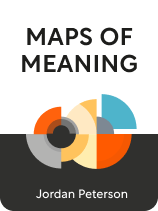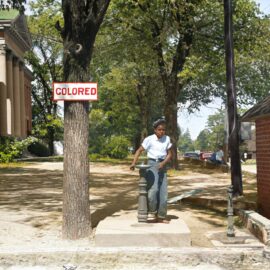

This article is an excerpt from the Shortform book guide to "Maps of Meaning" by Jordan Peterson. Shortform has the world's best summaries and analyses of books you should be reading.
Like this article? Sign up for a free trial here.
What are the primary mythological archetypes? What do they have in common? What do they represent?
The characters in our most primal myths represent the three broadest elements of human existence—the known world, the unknown, and the process of discovery. Jordan Peterson explores these characters in his book Maps of Meaning.
Keep reading for an introduction to these archetypes and how they each represent a different facet of the world.
Mythological Archetypes
One key aspect of these mythological archetypes is that each has creative and destructive potential. This, says Peterson, is a crucial detail. Acknowledging that everything in life has this duality is important to any complete moral system, which is what mythology exists to provide.
(Shortform note: Duality, the idea that everything has equal and opposite aspects, is as common in philosophy as it is in particle physics. While Peterson insists that acknowledging duality is essential to any complete moral system, there are those who argue that some dualities represent false equivalence. St. Augustine suggested that humans are inherently inclined to wrongdoing, but in Humankind, Rutger Bregman argues that human nature is driven by compassion. According to mathematician Daniel Bernoulli, humans are fundamentally rational when making decisions, but in Thinking, Fast and Slow, psychologist Daniel Kahneman shows that the human mind is amazingly vulnerable to irrational bias.)
In Greek myth, Zeus fought the serpent Typhon before taking his place as king of the gods. In English folklore, St. George killed a dragon before bringing Christianity to pagan lands. Peterson says the Dragon isn’t always literal—rather, it can be the primal stuff of creation from which everything else emerges. In the opening of Genesis, the Dragon is the void that God separates into light and dark. Whatever its form, the Dragon can be frightening, but conquering it brings about the creation of everything else in the world.
(Shortform note: While dragons are found everywhere in world mythology, what they represent differs vastly between cultures. In Western traditions, dragons are inherently evil embodiments of Chaos that must be destroyed. However, in China, dragons are symbols of good luck, health, and prosperity. To the Norse, dragons brought death and destruction but were used as symbols of power and strength. According to the Aztecs, the dragon Quetzalcoatl created the human race, and though he was a trickster, his actions were usually beneficial to mankind.)
The Dragon: The Primordial Unknown
The first aspect of human existence is that of the vast and terrifying unknown, everything that’s out there off the edge of the map. In myth, this realm of mystery is symbolized by the Dragon. Often pictured as an ouroboros—a serpent devouring its tail—the Dragon represents both the threatening nature of what we don’t know as well as its potential as the source of all new things.
The Dragon appears throughout history as a wild force of nature that has to be tamed or destroyed by the Hero for civilization to exist.
The Mother: Creator and Destroyer
While the Dragon represents the vast unknowns that exist outside of human comprehension, the Mother represents the unknowns that people face throughout their lives, such as the mysteries of nature or the uncertainties of human interaction. In a sense, the Mother is an extension of the Dragon in a form that can be comprehended on a human level.
The immediate image that springs to mind is Mother Nature. Just as children look up to their mothers, so too the earliest religions may have grown from ritual worship of the Mother Creator as the source of shelter and life. However, the Mother also has the power to destroy whatever she creates.
The Father: Good King or Tyrant
The second aspect of human existence is that of the familiar, civilized world, at least as it seems in the eyes of your own culture. This is symbolized by the Father, who represents the body of cultural norms that rest upon any given mythical system. The Father, like the Mother, has two separate aspects that depend on the state of society—that of the Good King who rules wisely and fairly, and the iron-fisted Tyrant who prevents change and growth.
The Father is the figure who embodies the personality and self-image of society, like England’s King Arthur or the U.S.’s Uncle Sam. According to Peterson, the Father’s laws and traditions hold back the threatening aspects of the Mother. The flip side of the Good King is the Tyrant, who represents society’s power to oppress.
The Son: Hero and Rival
Peterson argues that the third aspect of human existence is our capacity for learning, discovery, and exploration. This is embodied as the mythical Son. Often portrayed as descended from the gods, the Son becomes the Hero of the story, venturing into the unknown and returning with new knowledge.
Peterson claims that the Son’s heroic aspect is a poetic abstraction of how we make sense of and give meaning to the world. In myth, the Hero leaves the safety of home, confronts the threatening outside world, and grows as a result of his hardships. Of all the various personas in myth, it is the Son’s heroic aspect that is meant to serve as a model for human behavior.
The inverse of the Hero is the Rival, who is defined by his refusal to accept the need for growth. The Rival, much like the Tyrant, seeks to deny anything that isn’t in his worldview. As the Hero’s polar opposite, the Rival embodies lies instead of truth and stagnation instead of growth.
Exercise: Where Have You Met the Characters of Myth?
Peterson writes that stories from around the world contain many of the same archetypes because the tales that resonate the most reflect the commonalities of all human experience—the Dragon representing the vast, unknown universe, the Mother representing the creative and destructive aspects of the wild, the Father (good or bad) representing society, and the Hero (and his Rival) who makes the choice to confront (or deny) the dangers of the world.
- Think about a story that you’ve connected with since childhood, whether from books, TV, movies, or folklore. What is it about the story that makes it a meaningful part of your life?
- Do you recognize any of the mythical archetypes in that story? Who is the Father, the Mother, or the Dragon? Do they represent what Peterson suggests, or do you feel they stand for something else? If so, what?
- Who is the Hero of the story? What journey do they go on to resolve their main problem? How have they changed by the story’s end?

———End of Preview———
Like what you just read? Read the rest of the world's best book summary and analysis of Jordan Peterson's "Maps of Meaning" at Shortform.
Here's what you'll find in our full Maps of Meaning summary:
- Why myths are vital to how humans confront and make sense of a chaotic world
- How to apply the lessons of myth to live a more well-rounded life
- How the findings of neuroscience are echoed in the structure of our most ancient tales






